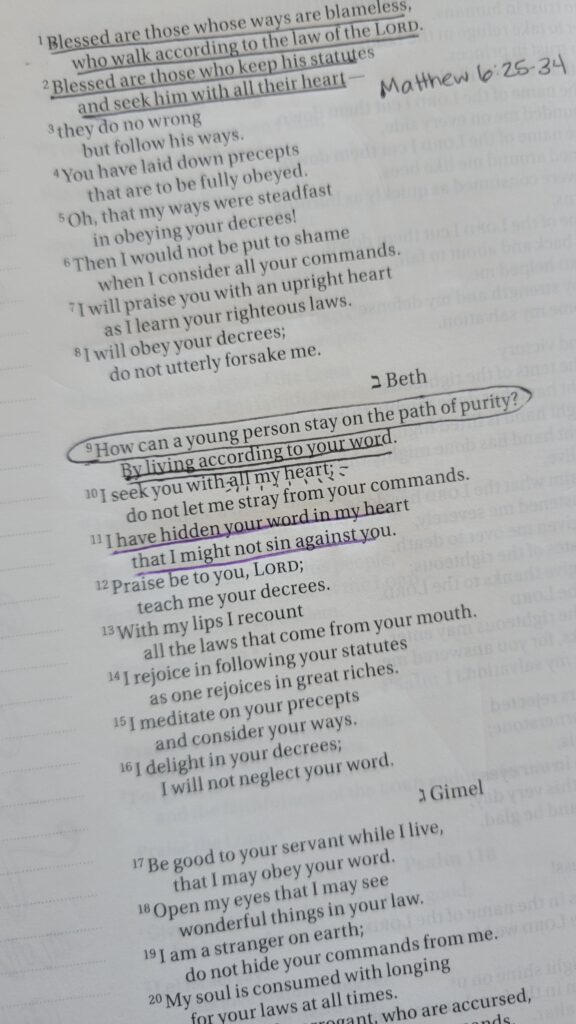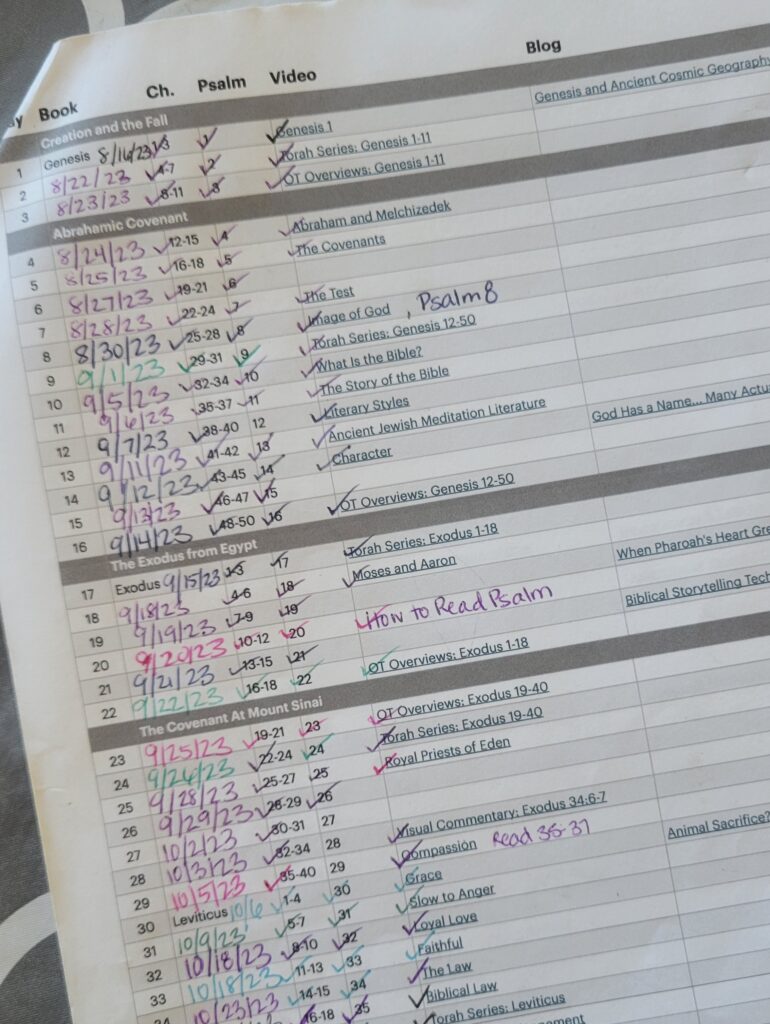I have some dear friends who have children a few years older than mine, and I have learned many parenting principles from them. One of their family projects that I wanted to imitate was the way that the parents strongly incentivized their children to read the entire Bible. My kids are at an age where they can comprehend a large majority of the lessons in the Bible, but their reading skills are far behind that.
I have tried multiple “Bible curricula” to use as part of our school, but I found there was too much exposition and too little Bible in these lessons. I wanted them to have the Bible in its entirety, rather than the few stories that our culture has deemed appropriate for children and the common verses they learn at church. The narrative of the Bible tracks from beginning to end, and the lessons of love, rest, peace, and redemption can be lost when piece-mealed away.
Two great resources for learning the overall narrative of the Bible are The Bible Project and the BEMA Discipleship podcast. My kids are not ready for BEMA yet, although I look forward to the days that they are because the conversations from those lessons can go deep. But they are well ready to watch the videos and follow the one year reading plan from The Bible Project.
I appreciate the layout of this plan because it adds a Psalm to each day’s reading, and it links a relevant video to many of the days. The kids love to start the lesson with the video and then listen to me read the assigned chapters and the psalm. I especially love reading one psalm a day because it means that we won’t spend a few months reading nothing but psalms in the middle of the plan. It also introduces a little poetry to every day and allows us to learn how to pour out our emotions in prayer and in song.
I am not concerned with finishing all the reading in exactly a year. In fact, it will probably take us closer to two years to get through it all, which releases the pressure to finish all the chapters if the kids are losing focus. There are a few days with four chapters or days when the three assigned chapters are particularly long, and we divide it into two days. We usually only read on Monday-Friday as well. My goal is to read a few chapters at least five days a week and know that eventually we will get through all the chapters.

I think that there is an important note of caution – if your children are not accustomed to listening to longer or denser stories, you will need to build up their “listening muscles.” We use a literature based curriculum for homeschooling, so I have been practicing reading long books aloud to the kids for the last four years. We also listen to audiobooks on many of our car rides and do narrations for most of our reading. So when we sit down, and I read three chapters of the Bible out loud, they have the muscles to get through readings that long.
When we first started reading out loud, I could only get through a few paragraphs before we had to stop. If you haven’t spent much time reading out loud to your kids, you might be in a similar place, and that’s okay. Start with a few paragraphs or a single chapter. As you consistently work on it, their listening and processing muscles will get stronger, and you will be able to get through more in a single sitting. But even reading a little bit every day will get you through the entire Bible eventually. It is the consistency that is most important.
To help with this issue, Eliam draws the entire time that I am reading. He has a notebook that he uses for both history and Bible drawings. Even as we worked our way through Leviticus, which can be a particularly daunting task for kids, Eliam enjoyed drawing the altars and the sacrifices and the blood sprinkled everywhere. He told me that he has a hard time remembering the stories without his comic-style pictures to remind him. This activity keeps him engaged and helps his narrations.
Ana Lia has to have her hands busy in order to listen most effectively. She often paints, draws, or sews while I read. If I asked her to sit still at the kitchen table for the entire reading, she would miss most of the lesson for daydreaming. The busyness of her hands helps her focus on the auditory input of my reading. It is often necessary to release the image that we have of “learning” to allow our children to process information in the ways that work best for them – laying upside down on the couch, building legos, or dancing around. If they are listening well, allow their movement to enhance their learning.

Finally, Finiasi is not required to be present for all the readings. At five years old, he is not ready to sit as long as the older kids do or understand all the concepts that they understand. He is not allowed to be disruptive, which is a temptation for him, but I do not expect him to have the same level of attention to the readings that I expect Ana Lia and Eliam to have. He joins us most days, which helps him build a habit of attention and his listening muscles, but his time for instructed learning is not yet here.
One of my favorite parts of this process has been how much I have learned about the Bible through reading it out loud. There are many different ways to have a quiet time and learn the Bible, but this is the first time I have endeavored to read it out loud. It forces me to slow down and acknowledge details that my brain skipped over when reading silently. For centuries, this is how people learned their Bibles – liturgical recitation. In the synagogues, the Jewish people would recite the Torah every year out loud and the other books of the Tanakh every three years. It has been an enlightening journey to experience this for the first time.
As we read through the Torah, I also read an accompanying children’s commentary called “Herein Is Love.” I don’t read this one out loud to the kids; I read it as my personal reading during that time. I also read the blog posts in the final column of the one year reading plan to myself. The kids don’t need all that background information yet, but it helps me have some conversation starters or some additional answers for when they ask questions. This is not a necessary addition but an excellent resource if you want your own study of the Scriptures to go a little deeper while you are reading it with your children.
A few final notes:
- These readings are separate from my personal times with God in the morning. While it is important that I teach the Scriptures to my kids, it is even more important that I maintain my relationship with Him.
- Comparison is the killer of joy: Just because this works well for us does not mean it will for you or that you should try to do it in the same way. Do what works for your family.
- Allow this to be a time of connection rather than frustration. If everyone is upset every time you try, maybe think of some ways to make it more fun – candles, tea, paint, etc.